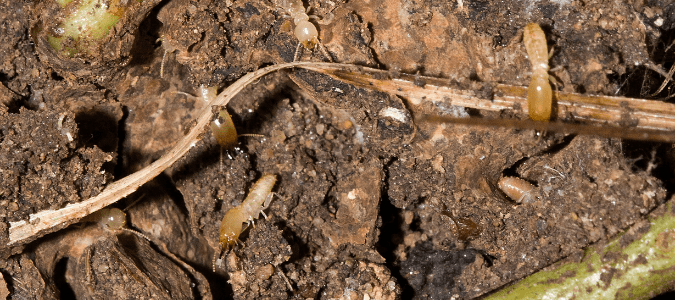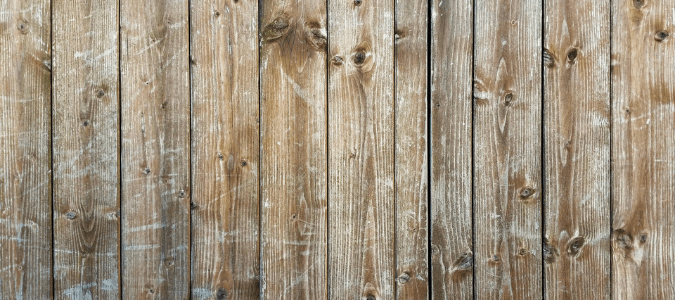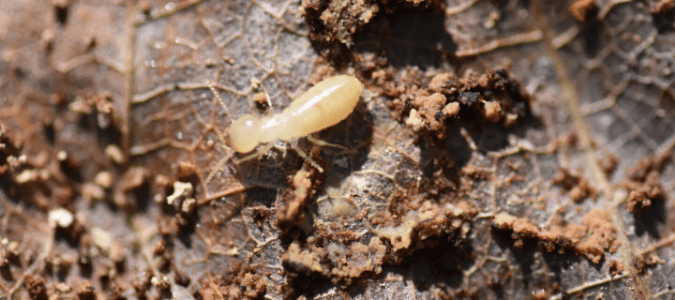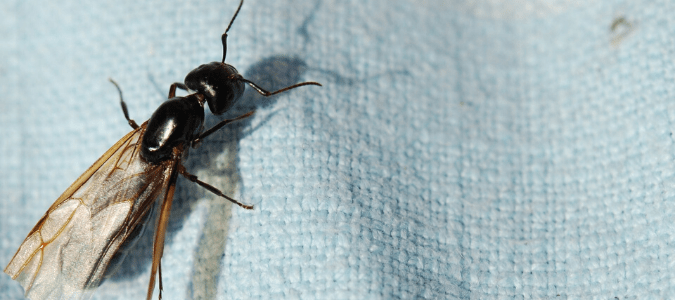
Many homeowners, especially those who spot signs of termite activity in their homes or elsewhere around their property, may wonder if there are any animals that eat termites. Do these pests have natural predators that can help keep termite populations low and protect homes from damage? Termites cause billions of dollars worth of damage to American homes and other structures each and every year, and once they have infested a home, they are notoriously difficult to get rid of.
Worse, termite colonies are typically hidden to the untrained eye, which means these insects can go about their destructive business for quite a long time before they’re detected. The varieties responsible for the vast majority of serious damage to our homes, subterranean termites, largely live out their lives in the dark, and their queens can lay many eggs in a single day. This means that termites’ natural reproductive and feeding habits can wreak extensive and costly havoc on homes, garages, fences and decking, long before the average homeowner ever realizes anything is amiss.
It would be wonderful if other animals or insects already living in your yard could act as natural pest control by preying on termites, thereby keeping these pests from causing damage to your home or property. Unfortunately, there are two reasons why this theory is not plausible. First, most established termite colonies are huge. Subterranean termite colonies can number in the hundreds of thousands or even up to a million members. Even drywood termites, which are less common than their subterranean cousins and cause less damage to American homes, live in colonies numbering in the hundreds or thousands. This means any insect or animal preying on termites would have to consume a huge number of them on a daily basis to make even a small dent in their population.
The second problem is the fact that, at least in the U.S., any animals and insects that are known to prey on termites are considered by most homeowners and exterminators to be pests, themselves. These include moles, which most people don’t want in their yards because of their burrowing behavior, as well as ants, wasps, spiders, flies and snakes, which many homeowners don’t want around for obvious reasons.
Certain types of frogs and lizards feed on termites, and while these may not strictly be considered pests, many homeowners also don’t want to encourage these creatures to hang around. Many types of birds also feed on termites when they have the chance, but since termites are just a small and opportunistic part of their diets, birds can’t be relied on for pest control. Even people who welcome any or all of these termite predator species are out of luck, since there’s just no way that these animals and insects can consume enough termites to be much help as far as natural pest control.
Rather than hoping for predatory animals and insects to keep termites from being a threat to their homes, savvy homeowners can be proactive by reaching out to reputable pest control specialists to schedule annual termite inspections. This is especially important for homeowners who have already spotted signs of termite activity in or around the home.
If you are wondering if there are any termite predators, it’s likely because you’ve found these pests or you’ve noticed signs of termite activity around your property. In this post, we’ll address common questions about termites and termite infestations, such as what to do if you’re finding termites in your home or in your yard and how to distinguish between termites and other similar pests.

What To Do When You Find Termites In Furniture
Finding termites in your furniture is a shocking experience for any homeowner. Even just finding possible evidence that might point to the presence of termites in furniture can cause a sinking feeling in your stomach. After all, if there are termites in your furniture, that’s a pretty good sign that there are termites elsewhere in your home.
A common sign of termites in furniture that people might see is small tunnels running through the wood. Another indication of termite activity is portions of the wood that are actually crumbling away. If you press on these spots, the wood easily gives way. Some people notice unexplained bits of sawdust that have collected on the floor underneath wooden furniture or around its legs.
There are two main types of termites that might be found in furniture. The first type is subterranean termites, which are the most prevalent type of termite in U.S. homes, and the type that pose the biggest threat in terms of potential for property damage. These termites live outdoors in underground colonies, usually either underneath homes or garages or near these structures’ foundations.
Subterranean termites build mud tubes to connect their colonies with their primary food source, which is why mud tubes, typically about pencil-wide and often located on the lower portions of the exterior of the home, are often the only sign that might tip off a homeowner to the presence of termites on the property.
Subterranean termites have been known to consume wood furniture, such as wooden outdoor furniture, but they aren’t the only type of termite that might be found in furniture. The other type is drywood termites. These termites don’t require as much moisture to survive as the subterranean variety, which is why they’re able to build their colonies in the rafters and eaves of attics, garages and other high-up spaces that are out of view. Drywood termites have been known to damage wood furniture, both indoors and outdoors, as well as wooden floors and baseboards inside people’s homes and other wooden elements of the home.
If you find termites in your furniture, you’ll have to determine whether the furniture is even worth keeping. If the damage the termites have caused is extensive, the furniture may no longer be structurally sound and may need to be thrown away. If the furniture is salvageable, the termites will have to be killed. Setting the furniture out in the sun for several days might help, since termites can’t withstand heat. Some people swear by wood polish, neem oil and aloe vera gel, as each of these can act as a protective covering that keeps termites away.
Do keep in mind, though, that the presence of termites in furniture indicates that even more termites are living somewhere nearby. If you find termites in furniture in your home, your best bet is to reach out to a professional exterminator to conduct a thorough inspection and recommend treatment options that are tailored to your particular home and situation.
Any time you find termites within close proximity to your home, it can be a frightening experience—even if you’re just finding them in your yard.

What To Do When You Find Termites On Your Fence
If you see termites on your fence, termites in trees or termites on any other outdoor area of your property, it’s a smart idea to have your home inspected thoroughly by a professional exterminator, who can advise you on the best next steps. This is because the discovery of termites on a wooden fence or deck indicates there’s a colony nearby that could number in the hundreds, thousands or higher.
It’s rare to see signs of termite activity in one of these areas that is limited to the area itself, unless the fence or deck is rotting and providing food and shelter to a smaller termite colony. It’s more likely that there is a full-blown termite infestation nearby.
Termites can also be found outdoors living in and feeding on rotting tree limbs or stumps, in piles of cut firewood or in old sheds or other wooden structures that may or may not be in use. This is one reason why it’s a good idea to keep dead and rotting tree limbs and other brush cleared away from your property and to store firewood on racks off the ground and well away from the garage, home or fence.
However, on occasion, what a homeowner believes are termites actually turn out to be something else.

Termite Larvae Vs. Maggots: How To Identify Termites In All Their Life Stages
If you come across wiggling little white insect larvae, unless you’re familiar with many different types of bugs and insects in their larval stages, you might wonder whether you’re looking at termite larvae or maggots. They’re both common, after all, so you might ask yourself the question: What do baby termites look like? Or, on a related note: What do maggots look like?
First, let’s take a look at their similarities. Both termite larvae and maggots are small, soft and whitish in color—and that’s about where their similarities end. Though small, maggots are typically larger than termite larvae, and they don’t have distinguishable heads or legs, which termite larvae do, as you can see in the photo above. Maggots’ bodies look something like a soft, banded grain of rice and are a relatively uniform shape from one end to the other.
Termite larvae, which are also called nymphs, aren’t as shapeless as maggots are, and they are even smaller—about a tenth of an inch long. Termite eggs hatch into nymphs, and during this larval stage, they look like smaller, wingless versions of their adult counterparts. Whitish or light-brown in color, these nymphs are somewhat translucent, with small heads, a pair of tiny, straight antennae and six little legs.
If you see larvae that you think might be termites, keep in mind that termite larvae can also look a lot like worker or soldier termites, which are two of the three types of adult termites. Are you wondering what these termites look like to the human eye? Worker termites look like just a slightly larger version of termite larvae, while soldier termites are even larger still. Soldiers’ bodies are pale in color, but their heads are usually a darker shade than their bodies. Termite larvae can also look a lot like ant larvae, unless you notice their subtle differences, such as the fact that termite larvae have bodies that are about the same width up and down, whereas ant larvae (and adult ants as well) have smaller waists.
Maggots are baby flies. If the larvae you’ve spotted turn out to be maggots, it means that flies laid eggs somewhere in or around your home, and those eggs hatched into maggots. If allowed to live, the maggots will turn into flies—lots and lots of flies. Most people don’t like having even one or two flies around, much less swarms of them. While these insects may not have the destructive potential of termites, they’re still annoying, not to mention the fact that they spread germs.
Whether you have maggots, termite larvae or some other type of insect larvae on your hands, it’s a good idea to contact a pest control specialist to make a definitive identification and determine the best way to eliminate these unwelcome guests.

Winged Termite Vs. Ant: How To Tell Them Apart
Many people have spotted a swarm of small, black insects with wings that are flying or crawling near a window, door or light fixture, and wondered exactly what type of infestation they might be dealing with. If you’re wondering about winged termites and ants, and more specifically how to tell the two apart, you’re probably on the right track, since the flying insects you’ve spotted are most likely either of these. Fortunately, there are some differences between them that can help you determine which one is in or around your home.
Winged termites are also called swarmers because they swarm out of their colonies and fly toward the first light they see, with the goal of mating and founding new colonies. Swarmers leave their original colonies usually in the springtime, after the last freeze, when temperatures rise and, often, after a rainstorm. If you see a pile of wings on a windowsill or near a door or light fixture, these may have been shed by swarmer termites, since they don’t keep their wings forever. They just keep them long enough to exit the colony.
It’s easy to mistake winged ants for termites and vice versa, since they look very similar to the untrained eye. There are subtle differences between them, however. Termites have straight antennae, for example, while ants’ antennae are bent like elbows. Termites’ bodies are roughly the same width from one end to the other, while ants have small waists. Winged ants, pictured above, can range from reddish-brown to brown or nearly black in color, while termites are typically so dark brown that they appear black.
A pest control specialist can determine whether you have winged ants or termites on your property, and can also recommend the best way to eliminate them for good.
ABC Can Eliminate Termites On Your Property
Finding signs you have termites or even termites themselves can be quite unpleasant. Whether you’ve just experienced a termite swarm or you’re merely suspicious of pest activity on your property, you can rely on the highly-trained pest control specialists at ABC Home & Commercial Services. Our skilled and licensed professionals use scientifically proven methods to eliminate termites and can put measures in place to prevent a future infestation, so you can have peace of mind that your biggest investment is protected.